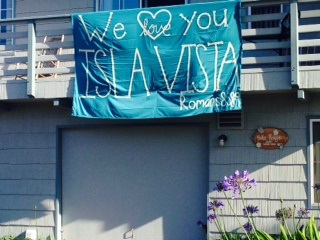Addressing Mental Health Issues
County Creating Crisis Teams with New Grant

Following the shootings in Isla Vista, the community, and people throughout the nation, are playing a blame game. They are trying to figure out how and why a person like Elliot Rodger fell through the social system safety net and was able to commit mass murder. They are pointing fingers at his parents, law enforcement, and the mental health system. However, the issues involved are complex, especially when you are talking about mental illness. It is a common, pervasive problem that is sometimes difficult to address.

Suzanne Grimmesey, an MFT (marriage and family therapist) and chief strategy officer for Santa Barbara County’s ADMHS (Alcohol, Drug, and Mental Health Services), said one in four adults experience some form of mental illness in a given year. In a recent press release, ADMHS emphasized the fact that most people with a mental illness are not violent: “While recent high profile mass shootings appear to have a mental health component, it is important to recognize that people with mental illness are far more likely to be victims of violence, not perpetrators of violence.”
When there are people in the community who are thought to pose an immediate threat to themselves or others, the county has a crisis team that can perform psychiatric evaluations. Mental health professionals from the CARES (Crisis and Recovery Emergency Services) team are called in to determine whether individuals should be committed to a facility on a 5150 hold. This May alone, the team responded to 206 calls involving adults in the South County (Santa Barbara, Goleta, and Carpinteria). Of the 206 people the CARES team was called to evaluate, half had involuntary holds written for them. Of the 50 percent, one-third were released with a safety plan; the rest were sent to a psychiatric facility involuntarily.
The county provides a number of other support services, as well. When talking about the number of requests for the CARES team, Grimmesey said, “That is nothing compared to the number of calls we get [on the county’s Access Line]. We get thousands,” she said.
One of the calls to the helpline in April, according to police, was about Rodger. A person identifying himself as a friend called to ask that someone check on his welfare. In response to the call, four Sheriff’s deputies, a UCSB Police officer, and a dispatcher visited his home and talked to him. According to police, he was polite and shy. When questioned about disturbing videos he had posted, police said that Rodger indicated he was having trouble fitting in socially. Police did not deem him an immediate threat to himself or others and did not call the CARES team or anyone else to perform a psychiatric evaluation.
At this time, there is no county mental health team dedicated to providing onsite support for people who are not deemed to be an immediate threat. UCSB does have a team that can respond to mental health issues of this nature, but the resource is only provided to people affiliated with the university. Since Rodger was a Santa Barbara City College student, he wouldn’t have had access to this support.
Soon, however, the county will be able to provide this type of assistance to anyone who needs it. Recently, the county received a $11 million grant to augment the mental health crisis system. “This will allow us to not only have a crisis team but to create a robust crisis system,” Grimmesey said. Plans are in the works to form triage teams in each region that will work 24/7 to provide support for mental health issues. The triage team could be called in by law enforcement or other organizations to link people to the resources and help they need. She said that coordination with law enforcement is being discussed right now. “That’s something we have talked about — a co-response,” she said.
In addition to funding a triage team, the grant money will also be used to set up a crisis stabilization unit specifically for mental illness. She said it will be an urgent care for psychiatric needs. “The whole goal is to help stabilize people so they don’t need to be hospitalized,” she explained. However, the triage team and the crisis stabilization unit are not in place yet. She said, “We are still planning out how this will work.”
For now, however, everyone in the Isla Vista area is just trying to deal with the aftermath of the shootings. Jeanne Stanford, UCSB director of Counseling and Psychological Services (CAPS), said that representatives have provided support in many different ways. “We walked around I.V. distributing flyers on grief response and where to get help; we talked with staff in the local stores, particularly where students were injured; we put resources on our CAPS website and Facebook page.” Counseling services have been offered throughout Isla Vista, in apartments, residence halls, classrooms, lecture halls, and the Graduate Student Association.
Resources are available for parents as well. Stanford said, “We talk with parents and answer their questions; we try to help coach them on how to talk with their child; we help them get their student to counseling if that is what’s needed. We let them know about the Distressed Student Response team if they are concerned about their student and want someone to intervene. We connect the parent to appropriate campus or off-campus resources.”
When asked how long it can take for someone to get over a tragedy like this, Stanford said, the normal healing process may take six to eight weeks. However, she added, “Grief is individualized and we try not to set a limit as to when someone should feel better.”



